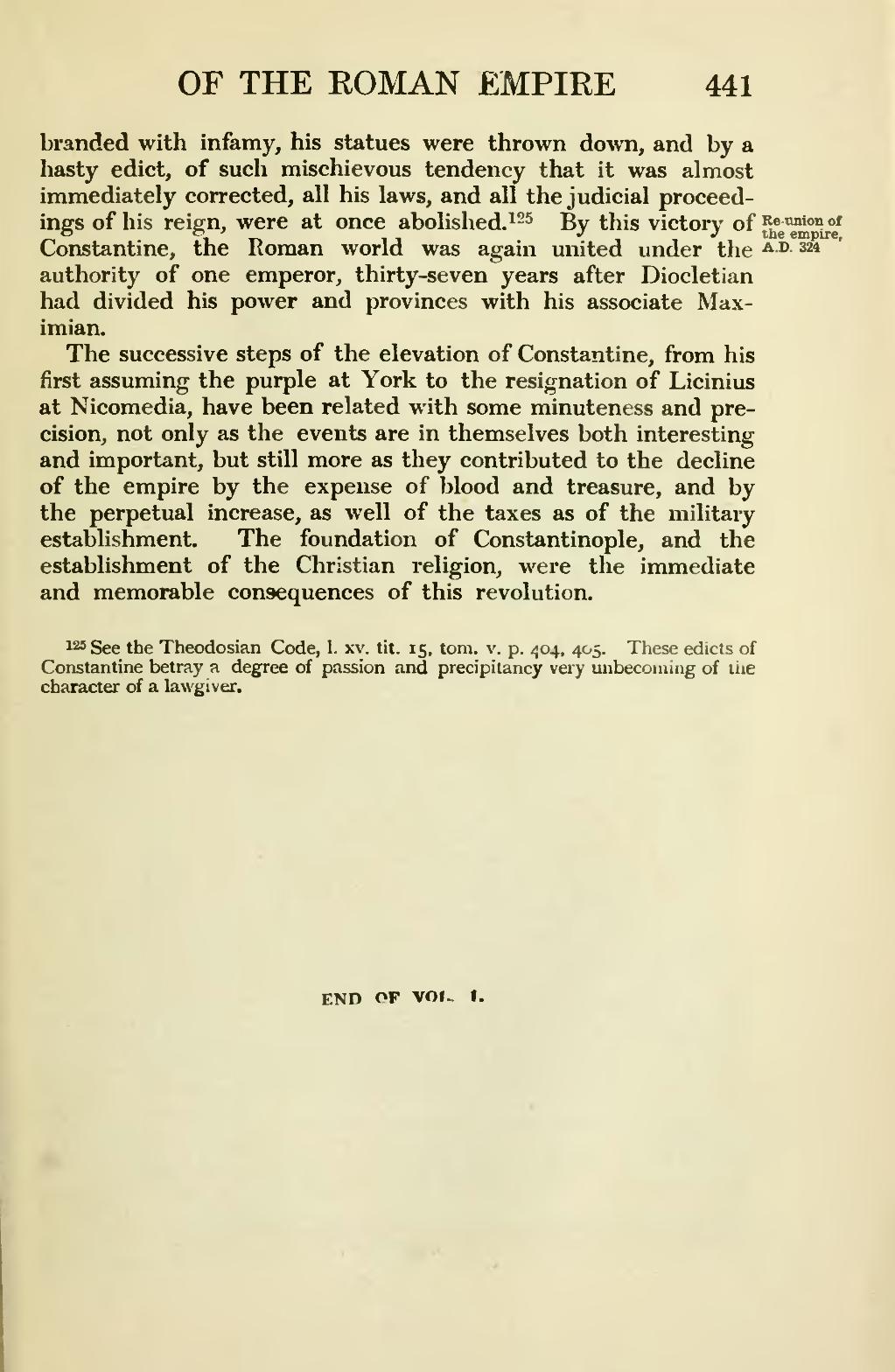branded with infamy, his statues were thrown down, and by a hasty edict, of such mischievous tendency that it was almost immediately corrected, all his laws, and all the judicial proceedings of his reign, were at once abolished.[1] Re-union of the empire, A.D. 324 By this victory of Constantine, the Roman world was again united under the authority of one emperor, thirty-seven years after Diocletian had divided his power and provinces with his associate Maximian.
The successive steps of the elevation of Constantine, from his first assuming the purple at York to the resignation of Licinius at Nicomedia, have been related with some minuteness and precision, not only as the events are in themselves both interesting and important, but still more as they contributed to the decline of the empire by the expense of blood and treasure, and by the perpetual increase, as well of the taxes as of the military establishment. The foundation of Constantinople, and the establishment of the Christian religion, were the immediate and memorable consequences of this revolution.
END OF VOL I.
- ↑ See the Theodosian Code, l. xv. tit. 15, tom. v. p. 404, 405. These edicts of Constantine betray a degree of passion and precipitancy very unbecoming of the character of a lawgiver.

